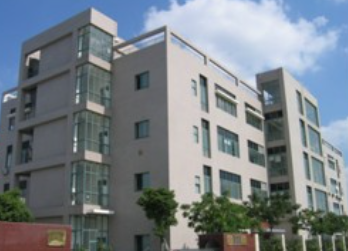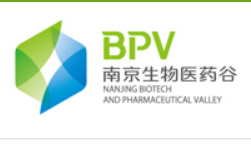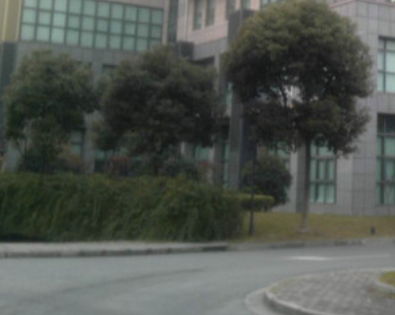烷氧羰基类保护基可用于氨基酸,以在肽合成中减少外消旋化的程度。外消旋化发 生在碱催化的 N-保护的羧基活化的氨基酸的偶联反应中,也发生在易由 N-酰基保护的 氨基酸形成的中间体恶唑酮中。
要使外消旋化程度减到小,需使用非极性溶剂、弱的碱、低的反应温度,并使 用烷氧羰基类保护的氨基酸是有效的。其中常用的有易通过酸性水解去保护的 Boc 基、 由催化氢解去保护的 Cbz 基、用碱经β-消除去保护的 Fmoc 基和易由钯催化异构化去保 护的 Alloc 基。
1、苄氧羰基(Cbz)
苄氧羰基(Cbz)是 1932 年 Bergmann 发现的一个很老的氨基保护基,但一直到今 天还在应用。其优点在于:试剂的制备和保护基的导入都比较容易;N-苄氧羰基氨基酸和肽易于结晶而且比较稳定;苄氧羰基氨基酸在活化时不易消旋;能用多种温和的方法 选择性地脱去。
1.1 苄氧羰基的导入
苄氧羰基的导入,一般都是用 Cbz-Cl。游离氨基在用 NaOH 或 NaHCO3 控制的碱 性条件下可以很容易同 Cbz-Cl 反应得到 N-苄氧羰基氨基化合物。α,β-二胺可用该试剂 在 pH= 3.5-4.5 稍有选择性地被保护,其选择性随碳链地增长而减弱,如 H2N(CH2)nNH2, n=2 时 71%被单保护; n=7 时 29%被单保护[1]。氨基酸酯同 Cbz-Cl 的反应则是在有机溶 剂中进行,并用碳酸氢盐或三乙胺来中和反应所产生的 HCl。此外,Cbz-ONB (4-O2NC6H4OCOOBn)等苄氧羰基活化酯也可用来作为苄氧羰基的导入试剂,该试剂 使伯胺比仲胺易被保护,但苯胺由于亲核性不足,与该试剂不反应.

Cbz-Cl 很容易用苯甲醇同光气的反应来制备(见下式),在低温下可以保存半年以 上而不发生显著的分解。

除 Cbz-Leu 为油状物外,绝大多数氨基酸的苄氧羰基衍生物都可以得到结晶。有的 N-苄氧羰基氨基酸能同它的钠盐按一定比例形成共晶,共晶产物的熔点较高,并难溶于 有机溶剂。例如,苯丙氨酸经苄氧羰基化后再加酸析出 Cbz-Phe 时往往得到共晶产物(熔 点 144℃),此共晶产物用乙酸乙酯和 1M HCl 一道震摇时可完全转化为 Cbz-Phe 而溶于 乙酸乙酯中。因此。除 Cbz-Gly 以外,一般都是采用酸化后用有机溶剂提取的方法来得 到纯的 N-苄氧羰基氨基酸。
游离氨基酸的 Cbz 保护示例

氨基酸酯的 Cbz 保护示例

A 3-L, three-necked, Morton flask equipped with an efficient mechanical stirrer, thermometer, and a dropping funnel is charged with L-methionine methyl ester hydrochloride 1 (117.6 g, 0.56 mol), potassium bicarbonate (282.3 g, 2.82 mol, 5 eq.), water (750 mL), and ether(750 mL), and the solution is cooled to 0°C. Benzyl chloroformate (105 g, 88.6 mL, 0.62 mol, 1.1 eq.) is added dropwise over 1 hr, the cooling bath is removed, and the solution is stirred for 5 hr. Glycine (8.5 g, 0.11 mol, 0.2 eq.) is added (to scavenge excess chloroformate) and the solution is stirred for an additional 18 hr. The organic layer is separated, and the aqueous layer is extracted with ether (2 × 200 mL). The combined organic layers are washed with 0.01 M hydrochloric acid (2 × 500 mL), water (2 × 500 mL), and saturated brine (500 mL), and then dried (Na2SO4), filtered, and evaporated on a rotary evaporator. The resulting oil is further dried in a Kugelrohr oven (50°C, 0.1 mm, 12 hr) to leave product 2 as a clear oil that solidifies upon cooling: 165–166 g (98–99%), mp 42–43°C.
氨基醇的 Cbz 保护示例(1)

Benzyl chloroformate (0.95 ml, 6.7 mmol) was added via syringe into a stirred mixture of aminoalcohol 7 (0.989 g, 5.1 mmol) and sodium carbonate (0.683 g, 6.4 mmol) in the solvent system water (10 ml)–THF (3 ml) maintained at 0°C. The mixture was stirred at room temperature for 18 h (TLC monitoring) and then partitioned between dichloromethane and water. The organic phase was dried and evaporated to afford a white solid which was passed through a column of silica gel with hexanes–ethyl acetate (v:v 2:1) to afford the desired product (1.198 g, 72%), mp 125–127°C.
氨基醇的 Cbz 保护示例(2)

To a mixture of toluene (3.85 L), water (3.85 L), and K2CO3 (470 g, 3.40 mol) were successively added 1a (770 g, 2.72 mol) and CbzCl (488 g, 2.72 mol) with vigorous stirring at a temperature below 25 °C. After stirring at room temperature for 3 h, triethylamine (27.5 g, 270 mmol) and NaCl (578 g) were successively added, and the mixture was stirred for a further 30 min. The organic layer was separated and concentrated to give the desired product as oil, which was used for the next reaction without purification. The analytical sample was prepared by column chromatography;
1.2、苄氧羰基的脱去
苄氧羰基的脱除主要有以下几种方法:1). 催化氢解;2). 酸解裂解;3). Na/NH3(液) 还原。一般而言目前实验室常用简洁的方法就是催化氢解, 但当分子中存在对催化氢 解敏感或钝化的基团时,我们就必须采用化学方法如酸解裂解或 Na/NH3(液)还原等。
催化氢解如下式所示。催化氢解的供氢体可以是 H2、环己二烯、1,4-环己二烯 [2]、甲酸铵和甲酸等,以后四个为供氢体的反应又叫催化转氢反应,通常这比催化 氢化反应更迅速。

催化剂主要用 5-10%的钯-碳、10-20%的氢氧化钯-碳或钯-聚乙烯亚胺,钯-聚乙烯亚胺/甲酸对于除去 Cbz 要比前两者要好。当 HBr/HOAc 脱去 Cbz 保护基时,产物往往带又一点颜色,而且分解产生的溴化苄会产生一些副反应并难以除尽,而催化氢解多数能得到无色得产物。由于硫能使催化剂中毒,因此,含有胱氨酸、半胱氨酸等含硫的肽 等 N-苄氧羰基氨基衍生物一般不用催化氢解法脱除。一般溶剂可以用甲醇,乙醇,乙 酸乙酯, 四氢呋喃等,在醇类质子溶剂中反应速度要快的多。
如果在 Boc2O 存在下用 Pd/C 进行氢化,则释放出的胺直接转变成 Boc 衍生物[1]。而且这类反应往往要比不加 Boc2O 来的快,其主要由于氢解出来的胺往往会与贵金属有 一定的络合,使催化剂的活性降低,和 Boc2O 反应为酰胺后则去除了这一效果。另外有时在氢解时加入适当的酸促进反应也是一样的道理,避免了生成的胺降低反应的活性。
另外当分子中有卤原子(Cl, Br, I)存在时,一般直接用 Pd/C 会造成脱卤的发生,一般 这种情况下,使用 PdCl2为催化剂,以乙酸乙酯或二氯甲烷为溶剂可较好的避免脱卤的 发生。
用 MeOH/DMF 为溶剂时,在 Cbz-赖氨酸衍生物氢化的过程中会生成 N-甲基化的赖 氨酸。使用氨为溶剂时,H2/Pd-C 在-33℃下氢化,肽中的半胱氨酸或蛋氨酸单元不使 催化剂毒化,此外,氨还会阻止 BnO 醚的还原,所以对 Cbz 可得到一些选择性。
5-10%的钯-碳催化氢解示例

A solution of (R)-8 (0.170 g, 0.52 mmol) in absolute methanol (3 ml) was hydrogenated in the presence of 15% Pd/C (0.026 g) at room temperature for 12 h. The mixture was filtered (Celite) and washed with methanol. Then, perchloric acid (0.050 ml, 0.83 mmol) was added and the mixture was stirred for 5 min. The solvent was evaporated to afford (R)-7·HClO4, mp 233–235°C; [a]D23=−15.6 (c=0.68, methanol).
5-10%的钯-碳催化氢解示例

A solution of N-Cbz arylglycinol (17) (1.02 mmol) in MeOH (10 mL) was stirred for 15 min in the presence of an excess of Pd(OH)2/C under a dihydrogen atmosphere. The solution was then filtered on a Celite pad and the solvent removed in vaccuo. Purification of the crude afforded the desired free 2-arylglycinols (S)-21 in 87% yield, white solid; [a]D20=+47.0 (c=0.78, CHCl3); mp 94-96°C (AcOEt)。
Pd/C-甲酸铵催化氢解示例

576.6 mg of compound 1 (1 mmol) was dissolved in 20 ml of methanol. Then 150 mg of ammonium formate (3 mmol) and 75 mg of 10% Pd-C was added and the reaction mixture was stirred at room temperature 10 min and then heated to reflux for 45 min. The mixture was filtered through celite and the filtrate was evaporate to dryness to give 430 mg of compound 2 (98%). This compound was used without further purification in the subsequent step.
Pd/C-甲酸催化氢解示例

Compound 1 (0.6 g, 0.8 mmol) was dissolved in 1:1 formic acid/methanol (60 mL) and added to a round-bottom flask (100 mL) containing 1 equiv of palladium catalyst (10% Pd/C, 1.0 g, 0.9 mmol). The mixture was continuously stirred under reflux temperature for 24 h. The catalyst was removed by filtration and washed with an additional 10 mL of methanol. The combined solvents were removed by evaporation under reduced pressure to give Compound 2 (0.34 g, 81%, a white solid, mp 96-98 °C). This compound was used without further purification in the subsequent step.
Pd/C 催化氢解脱 Cbz 上 Boc 示例
immersed in an acetone–dry ice bath, and a total of 300 mL of ammonia is passed through a drying tower containing potassium hydroxide pellets and collected in the flask. The bath is removed to permit the reaction to proceed at the boiling point of ammonia (−33℃), and a gentle stream of dry nitrogen is bubbled into the flask. A solution of 0.708 g (0.80250 mole) of N-benzyloxycarbonyl-L-methionine in 10 ml. of N,N-dimethylacetamide 1.02 g (1.40 ml., 0.0101 mole) of triethylamine and 1.25 g of freshly prepared palladium black are added. The nitrogen stream is discontinued and replaced by a stream of hydrogen that has been passed through a concentrated sulfuric acid scrubber. The mixture is stirred under reflux for 5.5 hours to effect hydrogenolysis. The hydrogen stream is discontinued, a flow of nitrogen is resumed, and the dry ice is removed from the reflux condenser, permitting rapid evaporation of ammonia. The flask is attached to a rotary evaporator, and the mixture is evaporated to dryness under reduced pressure. The residue is dissolved in water and filtered through a sintered funnel of medium porosity to remove the catalyst. The filtrate is evaporated to dryness, and the residue (354 mg, 95%) is crystallized from water–ethanol. The white crystalline product, after drying under reduced pressure at 25°, weighs 272–305 mg. (73–82%), m.p. 280–282° (dec.), [α]25D +23.1° (c = 1, aqueous 5 N hydrochloric acid).
酸解脱除
氨基甲酸苄酯在强酸性条件下容易去保护。HBr/HOAc 是酸解脱除苄氧 羰基的常用的试剂[1]。脱除反应主要按下式进行[2]。反应需要消耗 2 分子的 HBr,Cbz 的脱除速度随 HBr 浓度的增大而增大,因此实际上都是采用高浓度的过量 HBr/HOAc 溶液(1.2M-3.3M)以保证反应的完全。

含有丝氨酸和苏氨酸的肽或其它含羟基的氨基衍生物用 HBr/HOAc 脱除 Cbz 时 会发生羟基的 O-乙酰化反应。虽然 O-乙酰基能用碱皂化或氨解脱去,但为了避免这个副反应,可以改用 HBr/二氧六环或 HBr/三氟乙酸来代替 HBr/HOAc。由于 HBr 在三 氟乙酸中的溶解度较小,因此不能预先制成 HBr/三氟乙酸溶液,而只能将保护的肽或氨 基衍生物溶于无水三氟乙酸中,先于 0℃下通入干燥的 HBr,待 Cbz 大部分脱除后,再 室温通短时间以求完全脱除变化基。Cbz 被 HBr 分解产生的溴化苄能同肽中的某种氨基 酸反应,也是需要加以注意的。如,甲硫氨酸的硫原子能同溴化苄反应生成 S-苄基甲硫 氨酸,防止的办法是加入硫醚(CH3SC2H5)为捕捉剂[5。色氨酸被 HBr/HOAc 分解产生有色物质,防止的办法是加入亚磷酸二乙酯。硝基精氨酸会发生硝基的部分脱落,改 用液体 HBr 于-67℃处理可以避免。
用液体 HF 在 0℃处理 10-30 分钟即可将 Cbz 完全脱去。FSO3H、CH3SO3H、 CF3SO3H和 C6H5SCH3-TFA也是较好的试剂。Me3SiI 在氯仿、乙腈中能于几分钟内 选择性脱去 Cbz 和 Boc 保护基。对于 BBr3/CH2Cl2而言,较大分子的肽的 Cbz 衍生物 可在 TFA 中去除,因为肽在酸中的溶解度比在 CH2Cl2 中大。从肽中脱去 Cbz,可在 TFA 中添加 0.5 M 4-(甲硫基)苯酚或使用 HF/Me2S/对甲苯酚(25:65:10,v/v)来抑 制 Bn+对芳香氨基酸的加成。
此外,已经报道过的还有以下的一些不常用的方法。如 HCl/CHCl3、HCl/HOAc、 HBr/SO2、液体 HBr、TosOH、HI/HOAc、碘化磷、Et3SiH、沸腾的 TFA、 8M HCl 的乙醇液或 6 M HCl 回流 1 小时或浓盐酸于 25-75℃加热处理 1-1.5 小时 等。







